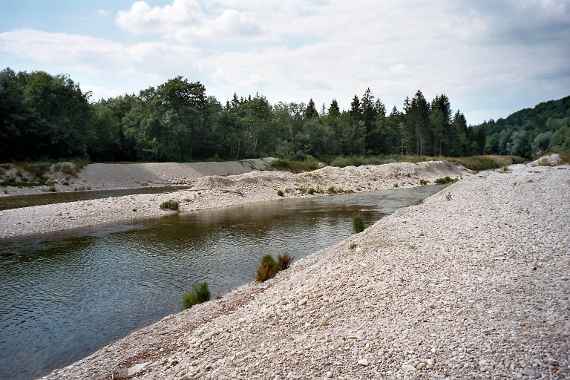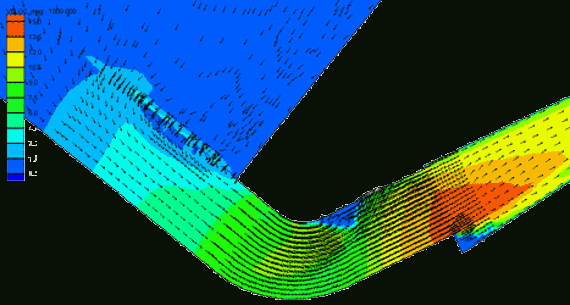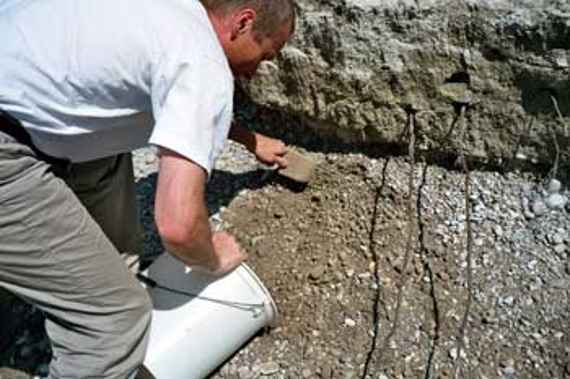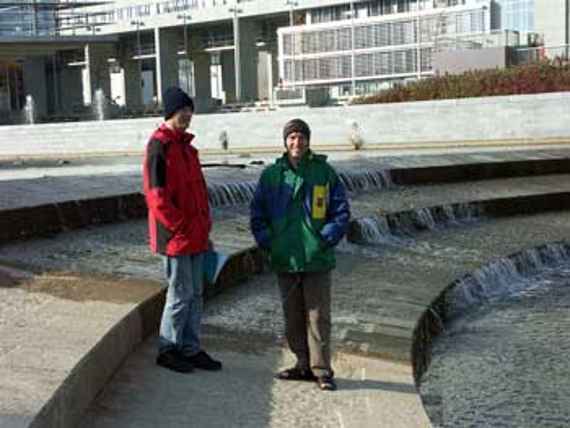For many years, there has been a lively cooperation with the Bavarian State Office for Water Management (LfW), especially with Mr. Bernhard Schaipp (head of department 44, water morphology and hydraulics), regarding hydraulic and water morphological questions. In order to intensify this cooperation on the one hand and to benefit from mutual specialist knowledge on the other hand, a bilateral working exchange between the Institute of Hydraulic Engineering (IWB) and the LfW was initiated which was carried out in July and September 2004, respectively. Doctor Stephan spent a four-week specialist residence in Munich and then DI Schaipp in Vienna.
Applying a one-dimensional computational flow model on a complex river morphology no longer meets accuracy requirements nowadays. Thus, the application of two-dimensional numerical flow models is increasingly becoming state of the art. In the course of several projects (restoration of the Lower Salzach, implementation planning for the Lower Salzach), the institute was responsible for the analysis and interpretation of results from the two-dimensional flow model HYDRO_AS-2d. The residence of Doctor Stephan at the LfW in Munich, therefore, was used to acquire know-how on the flow model HYDRO_AS-2d and to apply the flow model to a current hydraulic problem (flow modelling of the outlet and the spillway of the Wienerwald Reservoir).
Flow velocities in the spillway chute at design discharge (Q = 270 m³/s).
The institute has a long-standing expertise in modelling sediment transport processes using the one-dimensional transport model MORMO in river basin plannings (rehabilitation of the lower Salzach river, implementation planning for the lower Salzach). Information on the grain size distribution of both, subsurface and bed load material, is essential for reliable and plausible results of bed load transport modelling, since the grain size distribution is a highly sensitive parameter in bed load transport modelling. The knowledge on the uncertainties and possible errors associated with bed load sampling and river bed surveys in nature is of great importance in order to understand and better estimate the magnitude and types of uncertainties in these data sets.
Since the equipment for sampling both, bed load and subsurface material is available at the Bavarian State Office for Water Management, Department 44, the technical visit was used for practical bed load sampling and analyses.
Sampling of subsurface material from a restoration stretch on the Isar river.
As a first emphasis during his technical stay in Vienna, DI Bernhard Schaipp took the opportunity to learn how to prepare a data set for a concrete example (examination of the river bed stability of a section of the Alz river) for the bed load transport model MORMO and to carry out some simulations including sensitivity analyses.
The second focus was on learning a design program for step-pool-ramps, which was developed and is available at the institute. The dimensioning program is based on design criteria which were derived from many years of physical model test series on block ramps. These criteria are published in Vol. 9 of the reports series of the Federal Agency for Water Management (Platzer 2000). DI Schaipp got to know the dimensioning software by means of a case study from Lower Bavaria (Vils) and carried out some tests. Since a manual for this program is missing, the handling of the program can only be learned by "learning by doing" and detailed discussion of the results.
During an excursion with Mr. DI Schaipp, the physical model test activities of the institute were presented by means of some implemented examples (river bed stabilization at the Traisen in St. Pölten, Petzold weir near Lilienfeld, re-construction of the Wienerwald reservoir spillway).
DI Schaipp and Doctor Hengl on the bottom sill in front of the administrative district in St. Pölten
Thus, the personnel exchange is a successful example of how to benefit from mutual specialist knowledge in order to expand and deepen the own expertise, on the one hand, and to maintain and intensify personal contacts, on the other hand.




